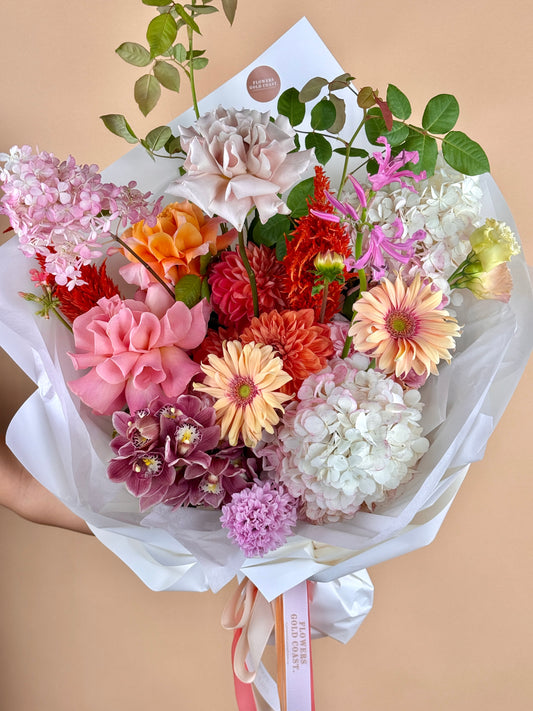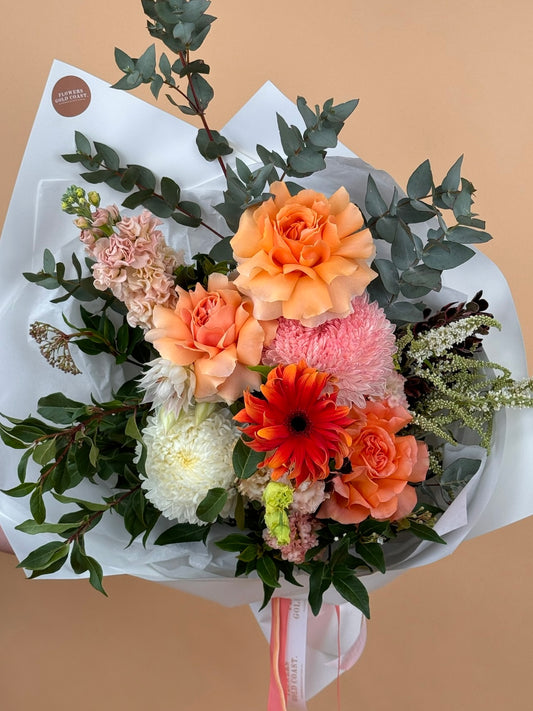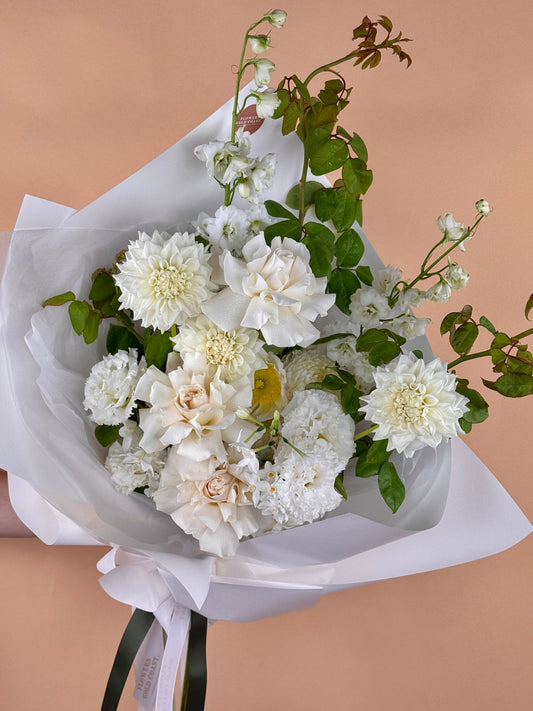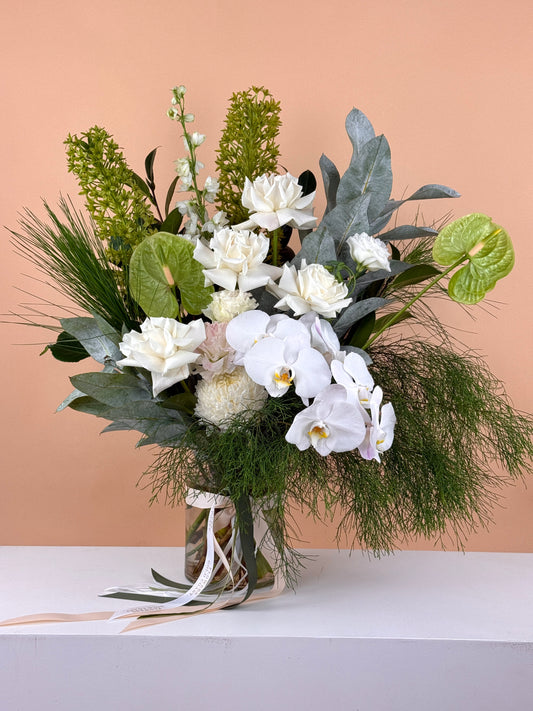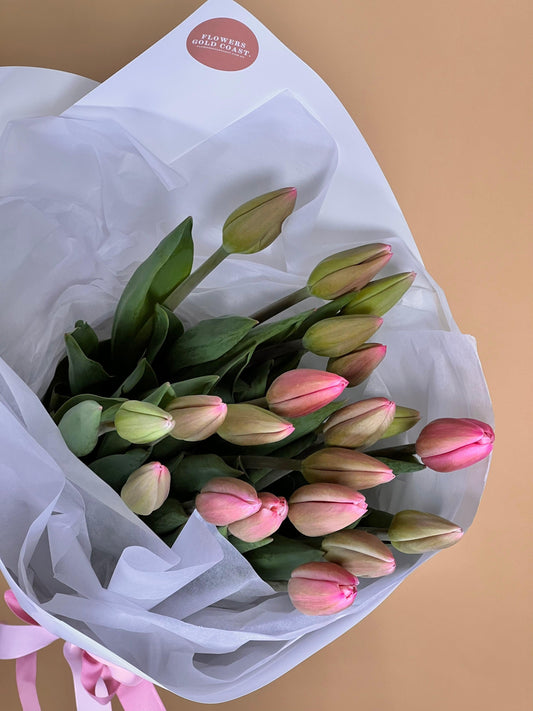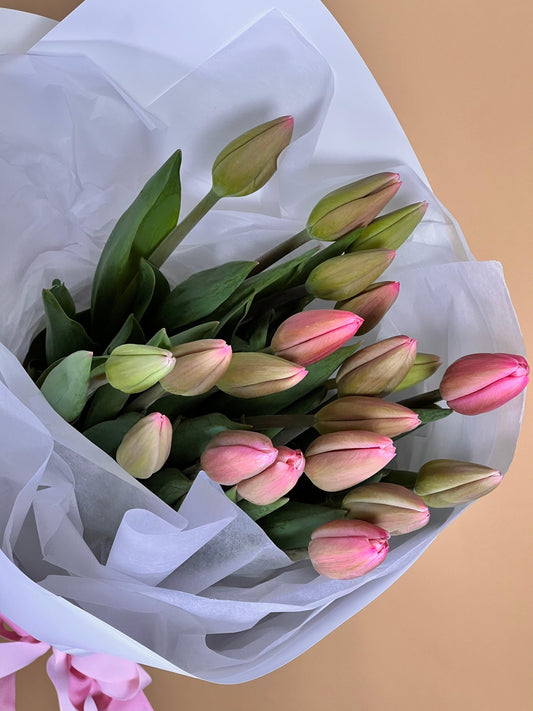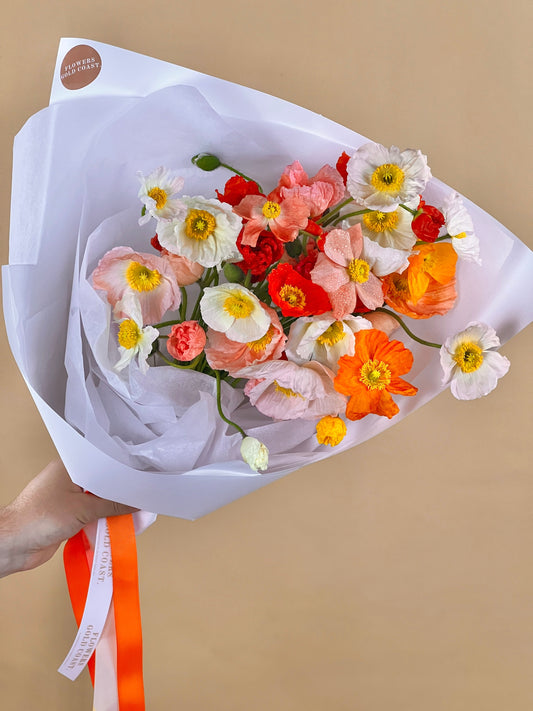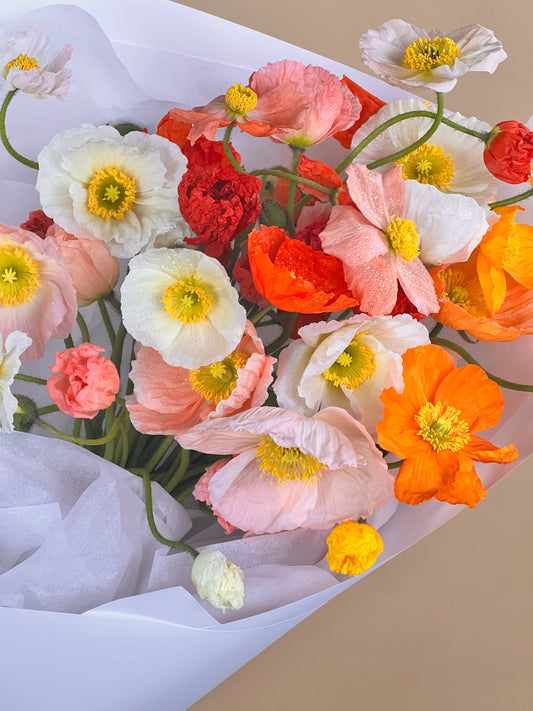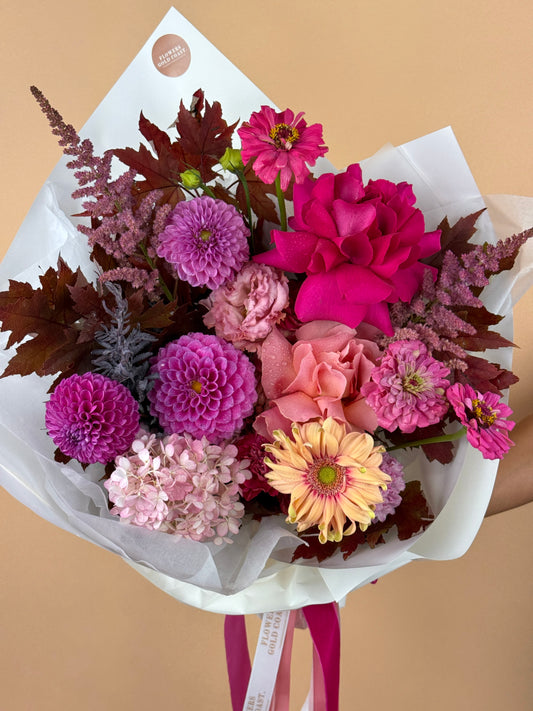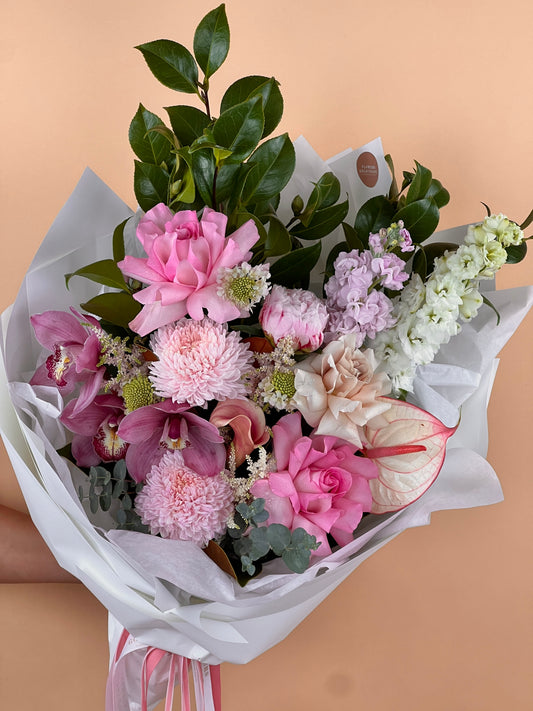Houseplant Care - Make your plants thrive!
Check out our Flower Care & Information Page!
Pilea Cadierei

| Scientific Name: | Pilea cadierei |
| Common Name(s): | Aluminum plant, watermelon pilea |
| Family: | Urticaceae |
| Height & Spread: | 12″ tall, minimal spread. Dwarf cultivars 6″. |
| Sun: | Bright but indirect lighting |
| Soil: | Loamy soil-based blend, well-draining |
| Water: | Water when 1/4″ soil is dry, requires high humidity |
| Pests & Diseases: | Mealybugs & spider mites. Also some leaf spot & rot issues. |
Pilea cadierei is an easy maintenance indoor plant as long as its need for humidity is supplied making it perfect for those humid Gold Coast humid days! Keep Pilea cadierei out of cold or hot drafts.
The main shoots of Pilea cadierei naturally divide into side branches and dense growth is usually automatic. But it may be advisable to nip out over-ling shoots sometimes, thus balancing and encouraging further division. Also, pinch off the flowers when appears in summer.
Water sparingly making the entire potting mixture barely moist but never allowing the mixture get too wet. Let the top two-thirds of the mixture dry out between waterings. Use tepid water or, if it is possible, rain water to water Pilea cadierei.
Bromeliad

| Common Name(s) | Extremely varied, but popular varieties include Guzmania, Tillandsia, Aechmea, and Ananas species of plants among many others. |
| Scientific Name | Varied (see common name above) |
| Family | Bromeliaceae |
| Origin | Tropical & subtropical Americas, Africa |
| Height | Varies |
| Light | Bright indirect light |
| Water | Water into leaf well, from above, or mist depending on variety |
| Temperature | Tropical, 60-80 degrees preferred for most species |
| Humidity | Medium to high humidity |
| Soil | Depends on species, may not always require soil |
| Fertilizer | Bromeliad, ephiphyte, or air plant fertilizers preferred as needed |
| Propagation | Pups/offshoots |
| Pests | Mealybugs, Mexican Bromeliad Weevils, breeds mosquitos |
Bromeliads are not difficult to grow, but some varieties are somewhat more dependent on strong light to develop deep, vivid colors in its leaves. Most bromeliads can even withstand some gentle direct sunlight, such as eastern morning exposure.
Water the plants moderately, enough to make the potting mixture moist throughout, but allow about one-third of the mixture to dry out between waterings. The cup-like centres of rosettes should also be filled and kept topped up with water; keep this water fresh by carefully upturning the plant about once a month, draining out the old water and replacing it.
Avoid tap water in the central cup if possible and use rain water.
Mammillaria Zeilmannania

Mammillaria zeilmanniana is a small growing, but easily flowering species of Cacti! When grown outside it likes full sun or afternoon shade, when grown inside it needs bright light and some direct sun.
Plant has spines; use extreme caution when handling.
In spring and summer water moderately, just enough to make the potting mixture moist at each watering, but allowing the top centimetre (0.4 inch) or so of the mixture to dry out before watering again. As cactus begin to form clusters, care should be taken to not allow the excess of water to remain on the surface of the mixture between the stems. Puddles of this sort can easily cause rotting. For this reason, it is a good alternative to water Mammillaria zeilmanniana from below. To do this, stand each pot in a pan containing 5cm (2 inch) of water and leave the pot there until the surface of the potting mixture has become moist to the touch. Leave the pot in water for two or three minutes once a week.
During the winter rest period give only enough water to prevent the mixture from drying out.

Succulents! Who doesn’t like a succulent?
But how to care for them? Succulents are so diverse that it’s difficult to find a one-fits-all answer to this question. There are thousands of different varieties with their own needs and habits. But how long do succulents live? As a gardener, you should get to know your plants. Read up on their life span, how fast they grow, and what they need in terms of sun, water, pots, soil and the like.
You can sometimes find average succulent lifespans online or at a garden center. However, there are many plants with unknown ages, simply because they haven’t been observed in nature long enough. Here are a few succulents with known life spans:
| Jade Plant | 70-100 years |
| Hens and Chicks | 3+ years |
| Aloe Vera | 5-25 years |
| Barrel Cactus | Centuries! |
| Living Stones | 40-50 years |
| Christmas Cactus | 30+ years |
Now that you know how long your succulent can live, we can focus on helping it get there. The key is to keep your succulent’s conditions as close as possible to its natural habitat. That care usually follows these general guidelines:
Water your succulent whenever the soil is completely dry. Give your succulent a deep drink until water runs out of the drainage hole. This is called the “soak and dry” technique. Succulents can usually bounce back from underwatering, but overwatering is a death sentence. Before you water again, be sure the soil in your pots has dried!
Give your succulent plenty of sunlight. However, most species cannot tolerate direct sun. Indirect or bright, filtered light is usually the best. If it doesn’t receive enough sunlight, your plant may begin to stretch out, or etiolate.
The soil should be very well-draining. There are many specialty succulent and cactus mixes that are perfect. You can also make your own mix by mixing one part potting soil with one part perlite. If the mix retains too much water, the roots will begin to rot.
Fertilizer depends on the variety of succulent you have. Some appreciate multiple doses a year while others don’t need it at all. Plants that do need fertilizing usually prefer one that’s balanced or low nitrogen.
Keep pests and diseases well away from your plants. Know the signs for common succulent pests such as mealy bugs, aphids and scale insects. Diseases are usually rare in succulents, but nearly all are prone to root rot. Prevent this by watering properly and keeping the stem and leaves dry.
Remember that these care tips are general and vary from plant to plant. For the best instructions, look into your succulent’s specific needs.
Philodendron
For generations, philodendrons have served as a main feature piece in interior gardens. Philodendron care is easy because if you watch for the signals, the plant will tell you exactly what it needs.
Even inexperienced houseplant owners will have no trouble growing philodendron plants because the plants adapt readily to conditions inside the home. This makes learning how to care for a philodendron incredibly simple!
Philodendron houseplants thrive indoors year round without complaint, but they enjoy an occasional stay outdoors in a shady spot when the weather permits. Taking the plant outdoors also gives you a chance to flush the soil with plenty of fresh water and clean the leaves.
Unlike most houseplants, philodendrons don’t experience as much stress when moving from indoor to outdoor settings.
How to Care for a Philodendron
Philodendron care incorporates three basic needs: sunlight, water and fertiliser.
Sunlight – Set the plant in a location with bright, indirect sunlight. Find a position near a window where the sun’s rays never actually touch the foliage. While it’s normal for older leaves to yellow, if this happens to several leaves at the same time, the plant may be getting too much light. On the other hand, if the stems are long and leggy with several inches between leaves, the plant probably isn’t getting enough light.
Water – When growing philodendron plants, allow the top inch (2.5 cm.) of soil to dry out between waterings. The length of your index finger to the first knuckle is about an inch (2.5 cm.), so inserting your finger into the soil is a good way to check the moisture level. Droopy leaves can mean that the plant is getting too much or not enough water. But the leaves recover quickly when you correct the watering schedule.
Fertilizer – Feed philodendron houseplants with a balanced liquid foliage houseplant fertilizer that contains macro-nutrients. Water the plant with the fertilizer monthly in spring and summer and every six to eight weeks in fall and winter. Slow growth and small leaf size is the plant’s way of telling you that it isn’t getting enough fertilizer. Pale new leaves usually indicate that the plant isn’t getting enough calcium and magnesium, which are essential micro-nutrients for philodendrons.
Types of Philodendron The two main types of philodendron houseplants are vining and non-climbing varieties.
Vining philodendrons need a post or other supporting structure to climb on. These include blushing philodendrons and heartleaf philodendrons.
Non-climbing philodendrons, such as lacy tree philodendrons and bird’s nest philodendrons, have an upright, spreading growth habit. The width of non-climbers can be as much as twice their height, so give them plenty of elbow room
Check out our Flower Care & Information Page!
Join our Team
You will be taken to our foundU platform to submit your application. Please ensure you complete it in full.
Featured collection
-
Peachy Bunch
4.82 / 5.0
(61) 61 total reviews
Regular price From $69.00Regular priceUnit price / per$20.00Sale price From $69.00 -
Porcelaine White
4.57 / 5.0
(7) 7 total reviews
Regular price From $69.00Regular priceUnit price / per$0.00Sale price From $69.00 -
Dreamy Pastels
4.73 / 5.0
(26) 26 total reviews
Regular price From $69.00Regular priceUnit price / per$0.00Sale price From $69.00 -
Pink Moment
5.0 / 5.0
(26) 26 total reviews
Regular price From $69.00Regular priceUnit price / per$0.00Sale price From $69.00 -
Soft & Sweet
4.95 / 5.0
(118) 118 total reviews
Regular price From $69.00Regular priceUnit price / per$0.00Sale price From $69.00

